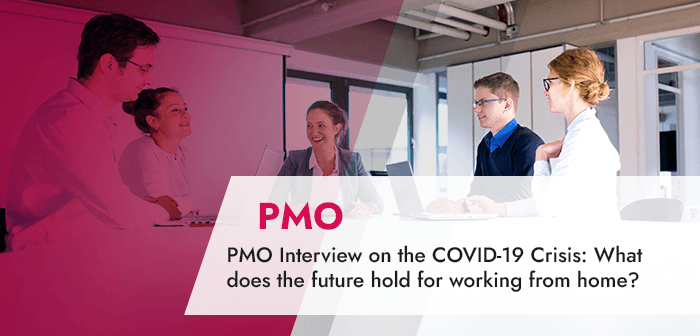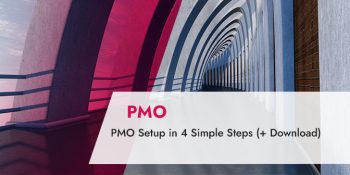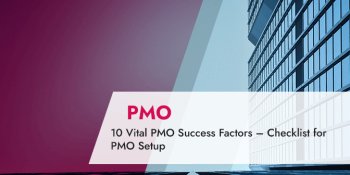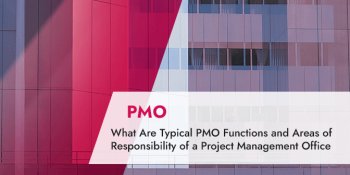The COVID-19 virus has completely dominated the economy and our public lives since March 2020. Not only here in Germany, but also worldwide, people find it nearly impossible to perform their job at their normal workplace. The debate surrounding working from home has taken on new dimensions since the COVID-19 crisis began.
The article Project Management in Times of Crisis explores how the crisis is affecting project management. It also delves into the role of the Project Management Office (PMO) and the project manager.
To get a better overview of the current situation, we asked 12 PMOs: How are you coping right now, and how has the COVID-19 crisis affected your work? The article also looks at the prognosis for the future, to see what we can expect. What do you think? Are we looking at a future in which working from home is the new business norm? A survey of PMOs highlighted various possible solutions.
These articles can help shed some light:
- How has the crisis affected PMOs?
- Is working from home a completely new trend?
- The advantages of working from home
- The disadvantages of working from home
- Conclusion: PMOs look toward the future
- Addendum: Microsoft analyzed data on it’s newly remote workforce
Special Download: How to setup a PMO in 4 simple steps (PDF file)
Please fill in the form.
* Required Fields | Data Protection
How has the crisis affected PMOs?
From late April to early May 2020, TPG The Project Group conducted telephone interviews with 12 PMOs from various industries. The survey was designed to determine how the work environment has been affected by the changes mandated by COVID-19.
The key findings were:
- All PMO staff members are currently working from home.
- All other departments for which working from home is possible, are currently doing so.
- Short-time work is being considered at 5 of the 12 PMOs.
- At the moment, the PMOs don’t foresee this situation ending anytime soon.
“I’m pretty sure that the normality we experienced just 3 months ago won’t return anytime soon.”
– Peter Heister, Head of CPS Project Center of Excellence; DXF-SP (Roche CPS – Centralised and Point of Care Solutions Roche Diagnostics GmbH)
However, there’s also good news: Our interviews revealed that, so far, many of the companies have not altered their portfolios. Only one PMO has scaled back its work to focus solely on documentation and process optimization.
We found that the problems generally involved the clients and/or partners. Some of these had to suddenly freeze projects.
#COVID #HomeWorking Day 1 … #Dilbert‘s Ethical Dilemma by @ScottAdamsSays pic.twitter.com/wTOqTAbM0j
— Sony Kapoor (@SonyKapoor) March 14, 2020
On the other hand, we were also told that client projects and orders have been gained new impetus or been given the green light to proceed.
This shows that order levels during this crisis are greatly affected by the type of industry. PMOs are trying to prioritize projects to determine those that are absolutely essential and then focus on these.
It’s hard to determine how much leeway PMOs truly have. The crisis makes reliable planning difficult for them as well.
- Key staff simply aren’t as readily accessible as before the crisis began.
- Meetings and deadlines have been postponed or canceled.
- Collaboration with foreign sites has its problems.
National companies are confronted with the issue of competitive advantages. When can each site reopen? Although some businesses are slowly beginning to reopen here, the situation is quite different elsewhere around the world.
Special Download: 10 Vital PMO Success Factors (PDF file)
Please fill in the form.
* Required Fields | Data Protection
Working from home – a completely new experience?
Only one PMO had difficulties with working from home, and that was because it had little experience doing so. For the others, this form of telecommuting was already quite common. They already had the technical infrastructure for working from home. This gave them flexibility in how the work was handled.
“We organized training seminars, held workshops, and performed integration tests with 150 employees. Plus, we were able to successfully handle go-lives remotely. Our clients were also well-prepared for this and were pleased that the project could continue unhindered.”
– Dr. Achim Detering, Kaufmännische Steuerung, Strategic PMO (commercial management strategic PMO) at GWS Gesellschaft für Warenwirtschafts-Systeme mbH
Most of the PMOs had already gained experience with coordinating projects nationwide remotely via the internet before the crisis began. One interviewee spoke of an order involving nationwide project management and product assurance. Here, even the task of organizing the teams remotely went surprisingly well.
Virtual meetings and conferences were already common practice at the majority of the PMOs even before the crisis began, sometimes simply for the purpose of avoiding long travel and the associated expenses.
“I hope that working from home becomes more common. We’ve seen that Microsoft offers several tools and it would be smart for us to implement and use these tools.”
– Oliver Grossmann, Head of Project Management (Sauber Motorsport AG)
Overall, most of the PMOs were well-prepared for the current scenario of working from home – even from a technical viewpoint. Employees could simply take their workplace laptops home because the company already had the necessary technological infrastructure for remote work. Some companies also held remote training seminars and workshops.
“We’ve been letting people work from home for several years already, so it was really nothing new.”
– Jürgen Hönack, Director PMO (ETECTURE GmbH)
Will this trend continue? To find out, we asked: What do you see as the advantages and disadvantages of working from home? Is working from home really a sustainable business strategy? Is a business environment led by people working from home really sustainable?
Advantages of working from home
Those we interviewed saw working from home as having these advantages:
- To some extent, better availability
- There was a sharper focus on the project itself without the normal distractions of an office environment.
- Better work-life balance because the commute was eliminated.
- Larger meetings involving more than 20 people are easier to coordinate because there is less downtime during the discussions.
- Meetings involving participants in different time zones are easier to coordinate because of the more flexible work management.
- Changes to internal project reporting can be handled easily because direct communication is rarely required for strategic PMO.
- It’s easier for companies in less desirable locations to attract skilled professionals and young adults.
The majority of the PMOs surveyed indicated that working from home was generally well accepted in their company. In some cases, it actually offered benefits.
“Our employees welcome the idea of working from home and would like to continue doing so in the future.”
– Jens Steinhilber, Engineering Systems project manager (mechanical engineering company)
However, working remotely also has its disadvantages.
To learn more, read: Project management in times of crisis – why it is now more important than ever
Disadvantages of working from home
“People feel lonely because they miss the social interaction at the office.”
– Eduard B. Bleckmann, Senior PMO Manager (KARL STORZ SE & Co. KG)
The PMOs we interviewed mentioned the following disadvantages to work from home:
- It’s much harder to maintain the personal contact to clients and teams.
- Being physically present is generally helpful when quick communication is needed and in meetings.
- It’s harder to provide orientation to new employees when doing so only virtually, because the human element is missing.
- If employees are to work from home long-term, the company must clarify what work items are needed and provide these (i.e desk, chair, headset, etc.).
- People who need the social interaction provided by an office environment may feel uncomfortable and lonely.
- There’s a scarcity of knowledge and discipline in how to use the new technology (i.e. Don’t use email to chat) – hence, some guidelines are necessary.
- An overabundance of tools can cause people to lose track of things.
- People don’t make good use of all the tool’s features.
“Communication suffers because people turn off the video to save bandwidth. They prefer to just share their screens.”
– Joachim Braun, PMO (Lenzing AG)
Working from home by @Dilbert_Daily 🙂 #dilbert pic.twitter.com/CvaDF7SSMN
— Oleksii Beloschuk (@beloschuk) May 19, 2020
Conclusion: PMOs look to the future
Our interviews revealed that all the PMO staff are currently working from home. We found that our discussions with them quickly turned to the advantages and disadvantages of working from home.
At the time of the interviews, none of the PMO staff had been affected by short-time work, but thought they might be sometime later. They viewed their role as PMO so essential that they thought they would be the last in their companies to be affected should short-time work be implemented.
For the sake of all of us #Homeworking under #Covid #Lockdowns I just hope that @ScottAdamsSays and #Dilbert were right about this … #FingersCrossed pic.twitter.com/vXZYSKQxLg
— Sony Kapoor (@SonyKapoor) March 15, 2020
Looking forward, they all agreed that: working from home is only a temporary solution – or at least not a 100 percent solution. They could imagine a scenario involving a combination of working from home and on-site work in the office. In the end, this could prove better than the workplace of the past.
The PMOs view the flexible workplaces of tomorrow as meeting these criteria:
- If the nature of the work permits it, employees will be offered the option of working from home.
- Employees must be flexible as well: they must be willing to attend important meetings in person if required.
- Staff should be present in the office on alternating days to keep the informal communication channels open and avoid having the office become an abandoned and unattractive place to work.
- IT experts must ensure that the collaboration tools enable staff to communicate with external contacts, such as customers and suppliers, as well.
- There must be uniform, agreed-upon guidelines for using the available technologies. These should regulate, for example, the purpose and use of each tool (i.e. no email chats) and where/how files are stored.
- All key information and documents must be (for example) accessible from home via an intranet. This precludes having physical, paper files.
- A tip for tool developers: Ideally, the various tools would be integrated so that each person could use their favorite tool.
All the interview respondents noted that normality, as it existed before the Covid-19 crisis, is still a long way off. Working from home will remain a key element of the work environment. To what extent it remains so, is subject to debate.
Addendum: Microsoft analyzed data on it’s newly remote workforce
In a new study conducted in July 2020, Microsoft analyzed the work behavior of 350 of its employees working from home during the pandemic. The study gave the company a clear picture of how its people were dealing with this new situation.
Microsoft noticed that the overall amount of time spent in weekly meetings grew by 10 %. However, this time was spread over a greater number of shorter meetings. While working from home, more people worked through their lunch hours and late into the evening than before the COVID-19 pandemic. The study confirmed the assumption that employees working remotely were becoming ever more flexible in how they scheduled their time. There was also another clear trend: virtual social meetings. Employees missed the natural, spontaneous way in which they normally met up with other people. So, they organized virtual lunch dates or virtual happy hour meetups after work.
You can read the complete study here: MICROSOFT ANALYZED DATA ON ITS NEWLY REMOTE WORKFORCE
Microsoft will now use the study results to respond to this new way of working from home. There will be new processes and guidelines, tools and workspaces, collaboration standards and resources to enhance employee well-being. Microsoft is certain that the pandemic will result in a future that is more digital, flexible, and conducive to remote work.
What has been your experience working from home? If you have been working from home, what do you see as the advantages and disadvantages? We’d enjoy hearing from you. Please leave your feedback in the Comments section.
 Achim Schmidt-Sibeth
Achim Schmidt-Sibeth
Senior Marketing Manager
After earning his engineering degree in environmental technology, he gained many years of experience in project management through his work at an engineering office, an equipment manufacturer, and a multimedia agency. Achim Schmidt-Sibeth and his team have been responsible for marketing and communication at TPG The Project Group for many years now.
Read more about Achim Schmidt-Sibeth on LinkedIn or XING
 Anna Pauels
Anna Pauels
Content Marketing Professional
She has worked as a journalist and photographer for the TV stations ARD and ProSieben, as well as newspapers such as Münchner Merkur and tz, and numerous lifestyle magazines. Today, Anna Pauels is a Content Marketing Professional at TPG The Project Group, handling the German, English, and French versions of the blog as well as the social media channels and the monthly newsletter.





